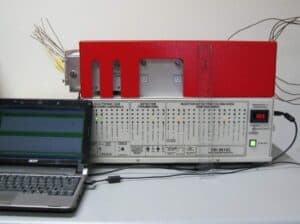OTIE uses ARC© to assess and resolve vapor intrusion (VI) problems
MILWAUKEE, WI / The inhalation of indoor air contaminated with trichloroethylene (TCE) can cause direct health effects. It is paramount to monitor for acute and chronic TCE exposure with the best possible technologies that reach low-detection limits and provide timely, accurate data. OTIE’s scientists and engineers are getting ahead of the environmental industry’s curve on vapor intrusion (VI) by recognizing:
Gasses are dynamic and their volatility characteristics can be missed by the conventional VI investigation and sampling approach which relies on time-weighted average data from passive samplers or vacuum canisters and two-dimensional modeling with assumed vapor diffusion attenuation factors.
The temporal pattern of VI is the key to understanding the problem and developing the correct solution; and
Each building has unique characteristics, contaminant history, occupancy patterns, temporal air-pressure profile, preferential pathways, and other factors that need to be understood to address VI effectively.
Through our holistic ARC© approach (Assess, Respond, Control) and the use of game-changing tools like VaporSafe™ we can solve our customers short-term vapor intrusion problems and position ourselves for long-term work to address the source of the problem and determine the best mitigation response action.
Read more about ARC© by downloading our brochure below.
ARC for Soil Vapor Intrusion_OTIE_Sept 2018.pdf
For more information, contact:
Nova Clite, Sr. Hydrogeologist, OTIE – (805) 585‐6396, nclite@otie.com
Emmanuel Vasquez, Project Chemist, OTIE – (805) 585‐4314, evasquez@otie.com












